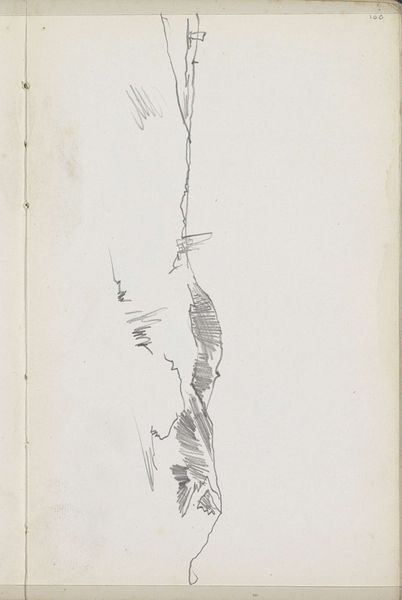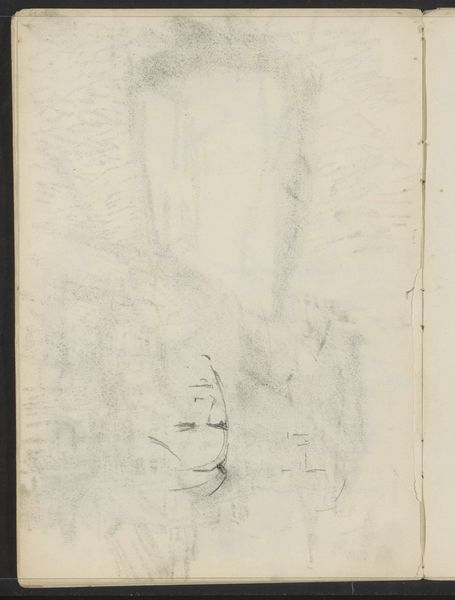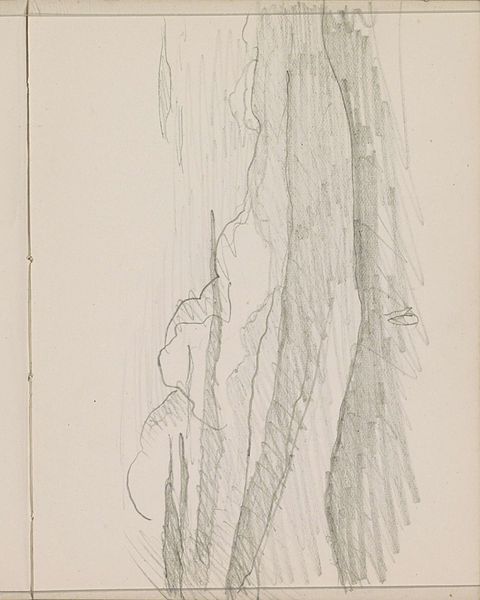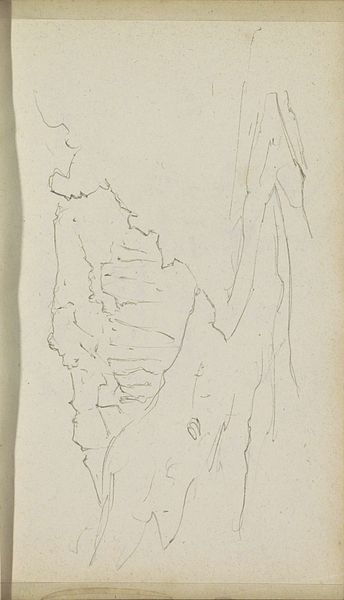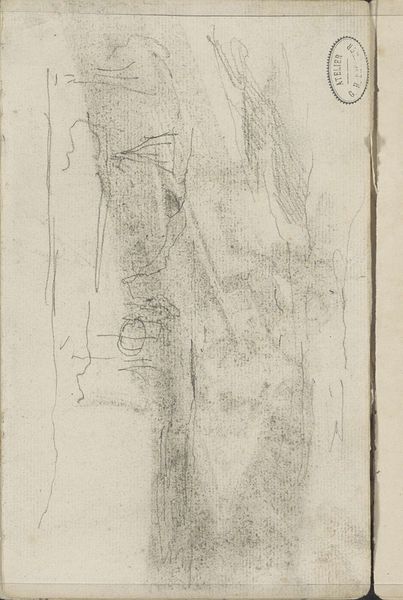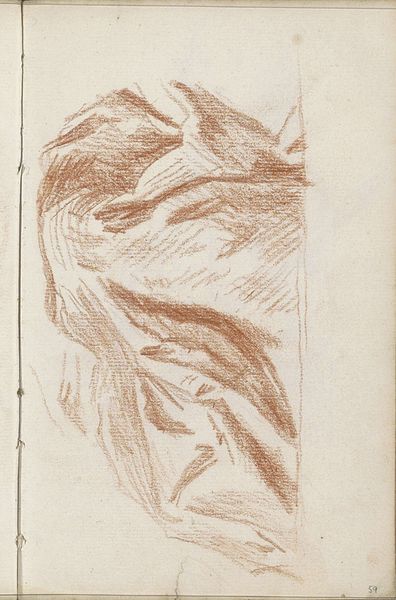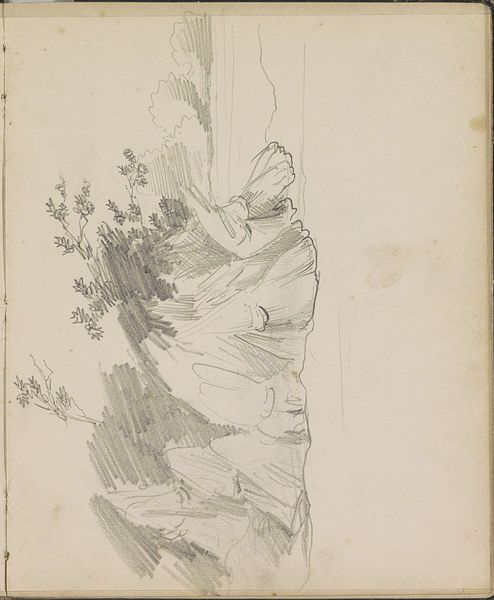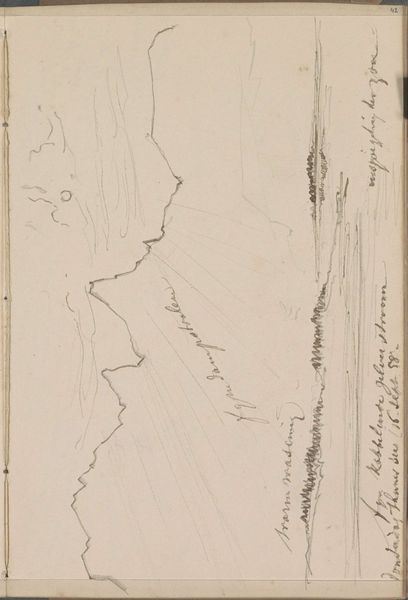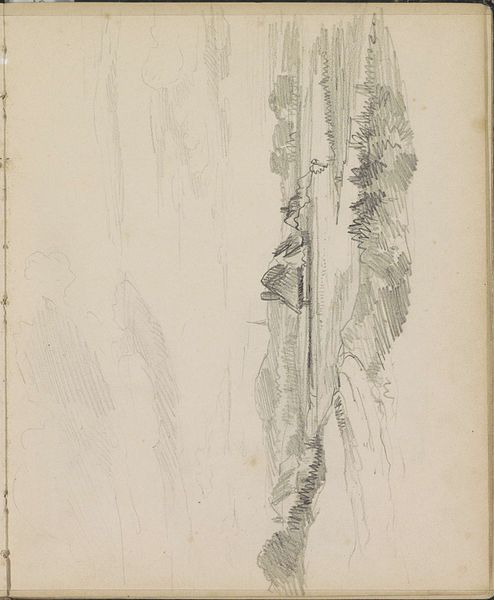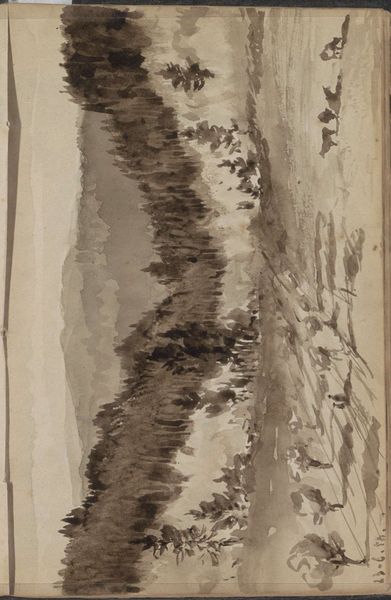
drawing
#
drawing
#
landscape
#
line
#
realism
Copyright: Rijks Museum: Open Domain
Curator: Here we have Johannes Tavenraat's drawing, "Bergen aan de Thunersee," possibly from 1858 or 1859. It's a work currently residing here at the Rijksmuseum. Editor: My initial reaction is one of sparseness and potential energy. It feels like the artist captured a moment just before a storm, or perhaps just after, leaving a sense of quiet resilience. Curator: An interesting interpretation! It certainly aligns with how landscapes were often employed, symbolically reflecting inner emotional states. Note how Tavenraat utilizes a precise linework style in this realistic portrayal of mountains near Lake Thun. Editor: The near absence of detail also draws attention to the inherent violence of landscape, how natural formations have emerged from shifting tectonic plates and other elemental battles. It evokes feelings of environmental responsibility in our era of the Anthropocene. What do the stark lines mean to you? Curator: To me, they’re more immediate and practical; the direct result of pencil on paper. Consider the emotional symbolism that the absence of details can often suggest, the negative spaces between the strokes conveying a certain openness. Editor: You read openness, I sense a kind of deliberate exclusion. The composition leads one to question what stories and perspectives are intentionally excluded from idealized landscapes. Curator: That's valid, considering the prevailing romantic interpretations. The very act of focusing our view changes everything, and invites questions about whose stories get told, or sketched. The landscape and social class were inextricably linked. Editor: Absolutely, especially in the 19th century, such works catered to particular classes and viewpoints. Let us think also about the access to spaces that might exclude many people, not just people who didn't have the time, but who had the means to explore those sites. Curator: Looking closer at how Tavenraat uses these lines to describe the rough texture of the rock, and the delicate reflections in the lake gives one a sense of intimacy, despite your feeling the contrary, that contrast that can also exist in nature itself. It's there, even when filtered by memory and history. Editor: Indeed! Memory itself often edits. Seeing this work through diverse lenses not only enriches its aesthetic significance but underscores its continued social and political resonance. Thank you for offering a nuanced insight to better understand that kind of social positioning embedded in visual imagery. Curator: The pleasure was all mine. Every image bears secrets and hidden meanings that continue to reshape us through time and space.
Comments
No comments
Be the first to comment and join the conversation on the ultimate creative platform.
